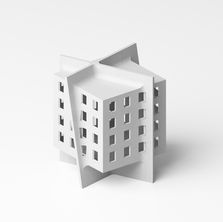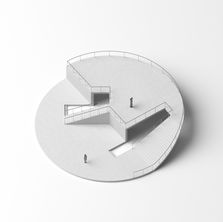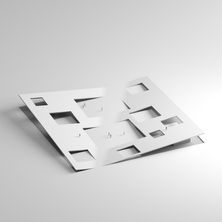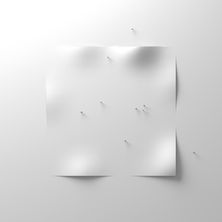

"All of the thoughts from previous projects I’ve mentioned have had a great influence on myself, and the manifestation of those learnings and the development of thoughts are displayed clearly in this series. They were supposed to be sketches on a notebook, but there was a part of me that wanted to resolve and execute each idea with the right dimension and proportion. It is why they are kept so simple and direct. I don’t spend more than an hour making each design, because the more developed it becomes, the more specific and predefined it becomes. I needed them to remain abstract because It wasn’t a matter of practicality, in other words, I don’t care if it works or not as a building product. These works have no context, no site, no program and no scale.
I see them as architectural objects that are meant to be studied from afar, only thinking about the thing in itself, and the meaning of their existence. The only thing that matters to me is the fact that I thought about it and the thoughts are translated and represented through architectural expressions. That way, each work becomes a record of ideas along the timeline of my career as an architect. They are juxtapositions of ordinary architectural elements. Made with recognizable parts such as wall, floor, column, beam, stair, roof, railing and so on. The familiarity of these elements serves as the set-up for juxtaposition and contradiction. When we see these recognizable parts, they trigger the preconceived notion of how they normally look like and how they’re normally used and what they’re normally used for. The manipulation and the misappropriation of these elements create something that is almost surrealistic and anomalous, that defies the convention of architecture, whether it is spatial or formal. So I’m trying to make a point that sometimes these ordinary and banal materials can turn into spectacles with appropriate transposition and manipulation. And I don’t have to come up with aesthetically pleasing geometry that looks good, and say “hey look at me, this is beautiful and interesting architecture”. Here I’m not so interested in the term aesthetic. They just exist, to convey deeply personal ideas and thoughts.
I ask the same question that Louis Kahn asked his brick. I ask my wall, “hey Mr.Wall, what do you wanna be?” And the wall replies, “I wanna be a floor today.” And I said, “okay, just bend yourself 90 degrees and you’ll become a floor.” Sometimes it is as simple as that, And I ask the same question to the rest of the architectural elements, creating more and more Architecture Anomaly. So far I have made 164 of them. The more I create, the clearer it becomes, that there are three overarching concepts to the series. They are 'singularity, conformity and ruinization'."
From AIAS Pratt Lecture 2022























